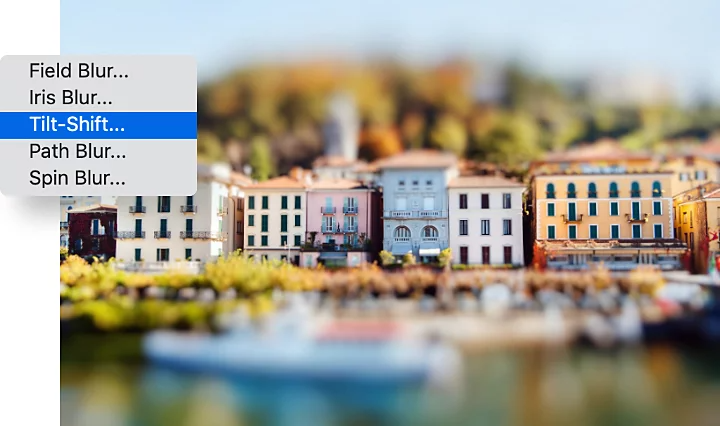Photography
Demystifying Gaussian blur.
Learn when to use Gaussian blur filters during image processing in Adobe Photoshop, gain a better understanding of how they work and how to pronounce “Gaussian.”
Photography
Learn when to use Gaussian blur filters during image processing in Adobe Photoshop, gain a better understanding of how they work and how to pronounce “Gaussian.”
Named after mathematician Carl Friedrich Gauss (rhymes with “grouse”), Gaussian (“gow-see-an”) blur is the application of a mathematical function to an image in order to blur it. “It’s like laying a translucent material like vellum on top of the image,” says photographer Kenton Waltz. “It softens everything out.” A type of low-pass filter, Gaussian blur smoothes uneven pixel values in an image by cutting out the extreme outliers.
Photographers and designers choose Gaussian functions for several purposes. If you take a photo in low light and the resulting image has a lot of noise, Gaussian blur can mute that noise. If you want to lay text over an image, a Gaussian blur can soften the image so the text stands out more clearly.


In product photography, you can direct the viewer’s eye to a certain part of the image by applying a Gaussian blur to every other part of the image. People’s eyes will naturally move to the sharpest area. You might also use this blur to hide the features of a person, licence plate or brand logo you don’t have permission to use.
Gaussian blur is also useful for reducing chromatic aberration, those coloured fringes at high-contrast edges in an image. For example, if you’ve taken a landscape photo of faraway palm trees against a light-blue sky, you might find bright white or red lines along the edges of your palm fronds. Applying a Gaussian blur will reduce the extremely bright pixels around the edge of the fronds, eliminating those bright spots.
You can also take a more creative approach to this tool. For a portraiture project, photographer Andres Gonzalez recalls using a Gaussian filter to create a surreal effect. In Adobe Photoshop, he added a duplicate layer over the original image and applied a Gaussian blur to that. Then, he says, “I went in with an eraser and erased the blur in places that I wanted to be focused. It created this foggy, frosted look.”
One thing to keep in mind when applying a Gaussian blur is that greater blur intensity results in decreased sharpness. In the case of the landscape photo above, when you apply the blur filter to the image, the white or red chromatic aberration disappears but the border between palm leaves and sky loses definition.
You can add sharpness back into the image by decreasing the blur radius. This is measured in pixels and it determines just how many neighbouring pixels the Gaussian function will take into account as it calculates the blur. You can also use an edge detection tool on the filtered image. As with the blur filters in Photoshop, the Refine Edge tool allows you to adjust the radius to create smooth, hard or feathered edges.

Both grayscale and colour images can contain a lot of noise or random variation in brightness or hue among pixels. The pixels in these images have a high standard deviation, which just means there’s a lot of variation within groups of pixels. Because a photograph is two-dimensional, Gaussian blur uses two mathematical functions (one for the x-axis and one for the y) to create a third function, also known as a convolution.
This third function creates a normal distribution of those pixel values, smoothing out some of the randomness. How much smoothing depends on the size of the blur radius you choose. Each pixel will pick up a new value set to a weighted average of its surrounding pixels, with more weight given to the closer ones than to those further away. The result of all this math is that the image is hazier.
With several options in the Photoshop Blur Gallery, there’s plenty of room for experimentation. Narrow the depth of field, keeping some objects in focus while blurring others, with lens blur. Highlight a focal point and blur the background with iris blur or create a dramatic sense of movement with motion blur. You can also learn how to restore noise in blurred areas to keep surfaces from looking unnaturally smooth. Just remember the first rule of Photoshop: always create a new layer to ensure that your edits are non-destructive.
